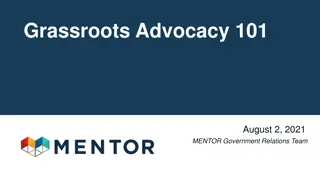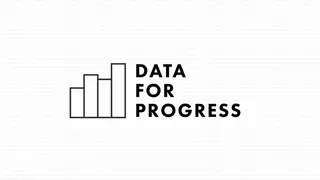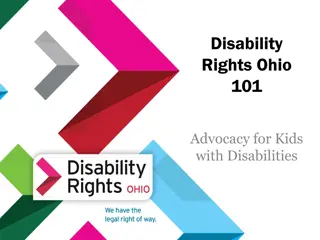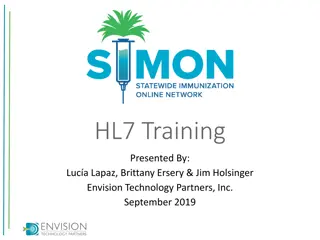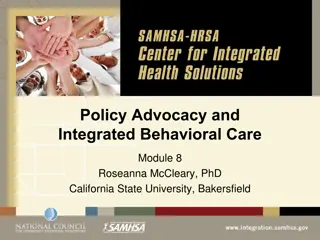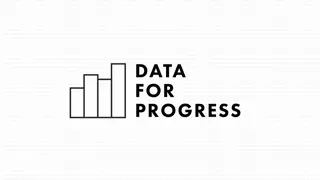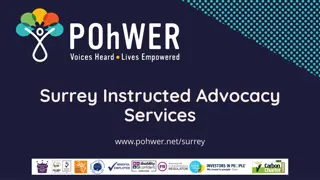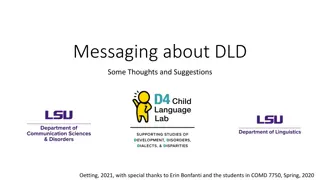Advocacy and Messaging Strategies in Federal Education Policy
Exploring the importance of advocacy and lobbying in federal education policy, this content covers topics such as the legislative process, notable CTE priorities, federal funding authorization, and appropriations. It highlights the role of federal advocacy in shaping education policies, influencing funding decisions, and providing a framework for state and local-level actions.
Download Presentation

Please find below an Image/Link to download the presentation.
The content on the website is provided AS IS for your information and personal use only. It may not be sold, licensed, or shared on other websites without obtaining consent from the author. Download presentation by click this link. If you encounter any issues during the download, it is possible that the publisher has removed the file from their server.
E N D
Presentation Transcript
NPS First Time Attendees Advocacy and Messaging on Capitol Hill
ACTE Public Policy Staff Stephen DeWitt Alisha Hyslop Deputy Executive Director Director of Public Policy Jarrod Nagurka Catherine Imperatore Advocacy and Public Affairs Manager Research Manager Michael Matthews Government Affairs Manager
Agenda Importance of advocacy and intro to lobbying How a bill becomes a law and how to pay for it CTE Policy 101 Current Education Policy Landscape Successful advocacy on and off Capitol Hill
Importance of Federal Advocacy and Lobbying Federal advocacy Most education policy decisions are made at the state and local levels. However, federal law provides a critical framework for those decisions Congress has the power of the purse, providing needed funds to states and locals through federal programs like Perkins, ESSA, HEA and WIOA Furthermore, the Department of Education has significant leverage to influence federal education policy through implementation and can guide state decisions
Notable CTE Priorities Perkins CTE Funding Bipartisan support for CTE, but budget caps spell trouble Funding increases in each of the last two fiscal years Check the Federal Funding section of your notebook Higher Education Act Forecast to be a major education policy push this Congress Both parties support principle of expanding Pell Grants to shorter-term programs Check the HEA Section of your notebook Infrastructure Bipartisan infrastructure package discussed by both parties Check the Hot Topics Section of your notebook
Federal Funding: Authorization and Appropriations Authorizing is the process of creating a program. When a program, such as Perkins, is authorized by the House, Senate and President, then Congress is allowed to assign or appropriate funding for the program. The funding of an authorized program is known as appropriations. After a budget has been set, Congress can determine how much money to designate for each individual program.
Appropriations Committee Produce bills that define specific funding allocations; make line-item budget decisions 12 Subcommittees in the House and Senate Education and labor funding occur in the Labor, Health and Human Services and Education Appropriations Subcommittee
Budget Timeline February President releases budget request March/April House and Senate work to complete budget resolutions by April May-July Appropriations committees set discretionary funding levels September Final appropriations bills passed and signed by President October 1 Beginning of federal fiscal year Learn more in the Federal Funding section of your Notebook!
Getting To Your Visits The most convenient method of transportation to and from your visits is the Metro. Plan to leave here at least one hour before your first meeting, and build in time to purchase your farecard if you have not already done so. Trains are not a foolproof means of transportation, and service can be slow outside of rush hour or due to track work. Trains are marked by color and final destination. Alternatives: Uber, Lyft, taxicabs
Getting There Continued Please open your notebooks to Hill Maps and Directories, page two. If your meeting is on the Senate side of the Hill, your best route is: Yellow Line in the direction of Fort Totten or Greenbelt Transfer at Gallery Place/Chinatown to the Red Line in the direction of Glenmont Get off at Union Station If your meeting is on the House side of the Hill, your best route is: Yellow line in the direction of Fort Totten or Greenbelt Transfer at L Enfant Plaza to any Orange, Silver or Blue Line train in the direction of Largo Town Center or New Carrolton Get off at Capitol South
Capitol Hill Map See the Hill Maps and Directories Section of your Notebook
Capitol Hill Basics Security on Capitol Hill is similar to an airport: Metal detectors and x-ray machines Put bags, folders, belts, watches and other metal objects in the x-ray machine Do not remove your shoes or jacket Snacks, bottled water OK (but not in CVC)
When You Arrive If a Member s office door is closed, just open the door. No need to knock. Introduce yourself to the front desk staff and leave a business card, if you have one. Office Staff Chief of Staff (COS) Legislative Director (LD) Legislative Assistant (LA) Legislative Correspondent (LC) Staff Assistant (SA)
What to Expect on the Hill Congressional climate has changed significantly since November election. House is now in Democratic control Senate, White House remains in Republican control. Balance of Power in Senate 53 Republicans 45 Democrats 2 Independents (caucus w/ Democrats) Bernie Sanders (VT) Angus King (ME) Balance of Power in House 235 Democrats 198 Republicans 2 vacancies
Messages for Congress Tell Members of Congress how critical Perkins, education and job training programs are for your community. Be sure to stress that any cut is unacceptable; Increased investments needed. Total Perkins funding for FY 2019 is still less than it was a decade ago. Reinforce the support CTE has from business, and mention any industry partnerships. Explain that without federal investment these programs are not possible. Help them understand how CTE overcomes the skills gap and prepares students to succeed in postsecondary education AND careers. Invite them to join the House or Senate CTE Caucus.
Lobbying Tips Be informed. Know the issues resources to read up include your notebook, the latest ACTE News and the CTE Policy Watch Blog. Check the policymaker s website to learn which committees they serve on, and read up on their background. Also check in notebook Hill Maps & Directories section Know the legislator s work check out his/her voting record Be prepared. Have data and specifics How will legislation impact your school and your district? Know your position and the rationale for that position ACTE s reauthorization priorities documents include helpful information.
Lobbying Tips Be friendly and open to listening Share your ideas with the legislator and their staff in an organized way, and make sure that you re clear and concise. If you can find something the legislator did well in the past, compliment that action. Listen to their perspective, and make sure you re considering all side of the issue.
Lobbying Tips Be calm. Maintain a professional demeanor remember, you re the expert in the room. Don t get flustered know your issue and bring the discussion back to your point. Give examples. Most Members of Congress are not educators by profession, so the more examples you can provide, the better they can understand your message.
Lobbying Tips Don t get sidetracked. Don t let the conversation get off topic! If you notice the issues becoming muddled, try to bring it back to your core message. Don t be afraid to admit that you don t know something. If you re asked a question on an unfamiliar topic, maintain your credibility by saying that you don t know. It s ok to say that you ll follow up after checking.
Lobbying Tips Find common ground Even if a legislator doesn t yet support your position on an issue, try to find opportunities to establish common ground every policymaker wants an effective education system for our students.
Always Have An Ask If you are lobbying for issue support, ask for their support. Will the Congressman support CTE issues? Use this meeting to invite your Member to see your program. Would the Senator be interested in visiting our biotechnology program at McKinley Tech High School? If you don t ask, the answer will always be no!
Post Visit Follow up with the staff person you met with in a thank-you note or email. Thank them for meeting with you. Remind them of the importance of your issue. Thank them for the member s support or ask again. Continue your dialogue with the office after you leave! Building a sustained conversation will lay the foundation for your future advocacy.
Student Lobbying Students should be able to articulate a personal story to members and staff. Prepare your students with data to go along with their story. Select one main speaker to deliver the story and message other students should contribute in support of that message.
District Advocacy Members are normally in their DC offices Tuesday- Thursday, and in a district office Friday-Monday. Invite a Member to see your program! Attend a legislative forum held by your Member. Members tend to hold weekly coffee hours open to all constituents. Attend a town hall meeting your Member is hosting.
Contact Info Jarrod Nagurka jnagurka@acteonline.org (703) 683-9312 Association for Career and Technical Education 1410 King Street Alexandria, VA 22314 (800) 826-9972 www.acteonline.org








